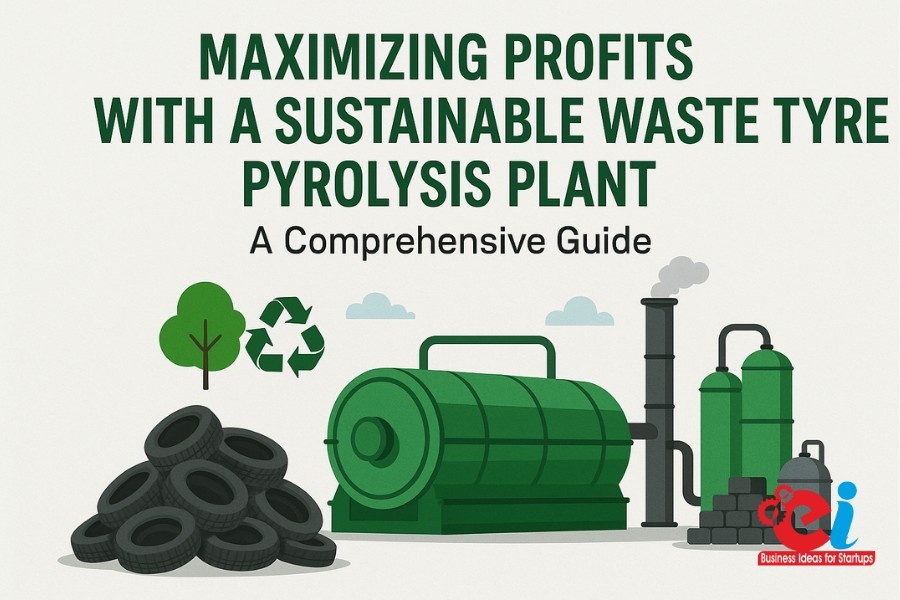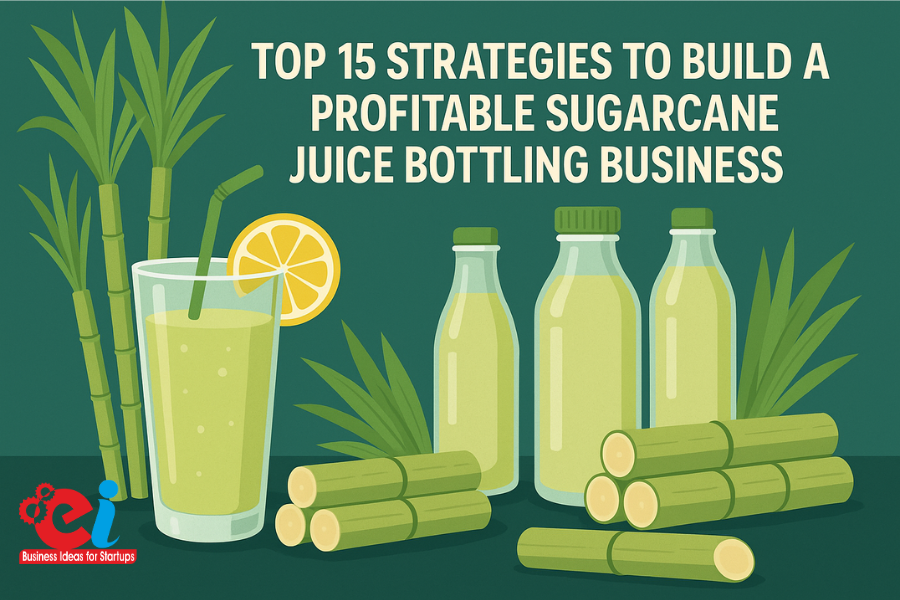The technological advancement in the method of Waste Tyre Pyrolysis Plant has transformed the issue of waste tyre disposal from a global problem into a sizeable business opportunity. In pyrolysis, tyres are heated in an oxygen-free atmosphere to produce valuable by-products such as pyrolysis oil, carbon black, steel wire, and syngas.
With India producing over 275,000 tonnes of old tyres every year and the global figure expected to cross 1.5 billion tyres annually, there is enormous opportunity for setting up a profitable business in Waste Tyre Pyrolysis Plant. But to excel in this business, it takes more than just putting up a plant; it requires smart execution.
In this article, we will discuss NPCS’s insights on the 15 strategies to construct, operate, and maintain a profitable waste tyre pyrolysis plant successfully.
1. Always Begin with an In-depth Techno-Economic Feasibility Study
Every industrial project begins with a detailed Techno-Economic Feasibility Report (TEFR). It contains the following sections:
- Market Demand Analysis: Evaluation for the existing need of oil, black carbon and steel in various sectors, for example, the World Bank.
- Project Cost Estimation: Cost incurred in investment on land, machinery, labor, utilities, and working capital.
- Financial Estimation: Evaluation of ROI, duration for recovering expenditure, internal rate of return, and break-even analysis.
- Risk Analysis: Examination of controlling risks, such as regulatory issues, market risk, and supply chain risk.
- Regulatory Overview: Provides licenses, environmental policies, and achievement of obligations.
NPCS ensures individual attention by developing specific DPRs for 5 – 20 TPD pyrolysis plants both within the Indian subcontinent and overseas.
2. Selecting the Best Pyrolysis Design Technology
Choosing the right pyrolysis design technology helps optimize cost, productivity, compliance, and profitability.
| Classification | Benefits | Drawbacks |
| Batch Reactor | Minimal cost, ease of use | Lower processing time |
| Semi-Continuous | Medium expense, good output | Skilled workers are essential |
| Fully Continuous | Powerful output, economized cost | High initial expense, complex system |
For continuous plants, profitability in the long run is higher, while batch or semi-continuous systems are best suited for startups with limited resources.
Related: How to start Tyre Recycling Business?
3. Consistent Tyre Supply Chain Initiate
To establish a waste tyre pyrolysis plant, consistent raw materials are needed. Suppliers include:
- Tyre Dealers & Workshops: Used tyre trading
- Transport Operators & Trucking Fleets: Outdated tyres from fleet maintenance
- Scrap Aggregators & Junkyards: Large quantities of mixed tires
- Municipal Solid Waste (MSW): Partnerships for municipal tire recovery
Encouragement of bulk suppliers, establishing contracts, and employing reverse logistics in collaboration with EPR-registered tyre producers can add value.
4. Check All Approvals and Licenses Required
The hazards ofWaste Tyre Pyrolysis Plant mandate strict legal oversight. Important approvals consist of:
- Consent to Establish & Operate (From State Pollution Control Board)
- Hazardous Waste Authorization (In accordance with Hazardous Waste Rules, 2016)
- CPCB Guidelines Compliance (Achieve emission and waste norms)
- Factory License and Fire Safety NOC (Occupational health and plant safety)
- GST registration and Udyam MSME certificate
Do not optimize; this circumvention can lead to dire fines or business closure. Seek out permits instead.
5. Purchase Efficient Compliant Equipment
Equipment affects:
- Output and product quality
- Plant emissions and pollution
- Overall energy usage
- System idle time
Primary Components:
- Tyre shredder and conveyor belt
- Rotary or Horizontal reactors
- Oil gas separators and condensers
- Carbon black dump system
- Syngas scrubber
- Chimney equipped with monitoring devices
Machinery with automatic feeding, passive gas recovery, and active pollution control should be selected.
6. Increase Yield and Efficiency of Processes
Key output per tonne of tyre:
- 35–45% Pyrolysis oil
- 30–35% Carbon black
- 10–15% Steel wire
- 10–12% Syngas
Strategic Aims:
- Pre-shred tires for better penetration cooling middle layer
- Recover and reuse syngas so less diesel is needed
- Controlled cracking through temperature zone monitoring
Related: Step by Step Guide to Launch a Successful Crumb Rubber Powder Production Unit
7. Recover Value and Improve Byproducts
Production upgrading helps improve profits:
- Light diesel or kerosene and solvents from distilling pyrolysis oil
- Carbon black micronization for paints, marker ink, and plastics
- Steel wire bales removed from rust, ready for use
- In some regions, permits for credits as syngas-based power can be sold
Value addition can lead to overall product value of 30–50% more.
8. Maintain Emission and Environmental Standards
Reduction in pollution during pyrolysis is extremely important.
Regulatory focus:
- Soot emissions – PM2.5, PM10
- VOCs, SOx, NOx, and CO2
- Effluent and solid wastes
Control Measures:
- Wet scrubbers with dosing lime
- Chimneys with inline monitoring
- Zero Liquid Discharge (ZLD) Systems
- Lead and carbon residue treatment unit
NPCS offers full EIA services including scrub design and waste material handling systems.
9. Employ and Train Skilled Workers
To run the Waste Tyre Pyrolysis Plant efficiently, the following roles must be trained:
- Plant Manager: Experience in thermal systems or chemical operations
- Operators: Knowledge of pyrolysis cycle, temperature, and safety systems
- Technicians: Responsible for pumps, motors, valves, and condensers
- Safety Officer: Fire control and PPE enforcement
Training reduces downtime and safety risks.
10. Plant Design Considerations
An efficient layout must consider:
- Delays from material movement
- Cross-contamination
- Fire or gas leak hazards
- Worker fatigue
Define Functional Zones:
- Tyre feed section
- Reactor region
- Oil storage and condensing
- Carbon black storage
- Quality control lab
- Waste treatment and servicing area
NPCS Design Plant provides CAD schematics with production flow and layout.
Related: Step by Step Guide to Launch a Successful Crumb Rubber Powder Production Unit
11. Draw a Strategic Plan for Product Marketing and Distribution
| Product | Target Buyers |
| Pyrolysis Oil | Brick manufacturing, ceramic factories, boilers |
| Carbon Black | Rubber goods, masterbatch units |
| Steel Wire | Foundries, steel scrap processors |
| Syngas (internal) | Used as fuel for plant operations |
Use direct sales and B2B platforms like IndiaMART and TradeIndia.
12. Investigate Export Opportunities of Pyrolysis Byproducts
Export Destinations:
- Middle East & Southeast Asia: Pyrolysis Oil
- Africa & Eastern Europe: Carbon Black
- Bangladesh & Vietnam: Reclaimed Steel
Export Requirements:
- IEC Code (DGFT)
- MSDS and quality certification
- Export permit (if hazardous)
- UN-certified packaging
13. Utilize Subsidies and Government Encouragement for Green Initiatives
- PMEGP Loans (Up to ₹25 Lakhs with subsidy)
- SIDBI Sustainable Finance Scheme
- Waste management benefits under Startup India
- State Industrial Policies (capital subsidy or stamp duty exemption)
- CPCB support (EPR) linked to tyre producers
NPCS assists with DPRs, loan proposals, and subsidy eligibility.
14. Promote Your Company as Part of the “Green Industry”
Aims:
- Reduce landfill waste
- Minimize fossil fuel dependency
- Support India’s carbon neutrality goals
Promotion Tools:
- Corporate website and blog
- YouTube factory tour videos
- LinkedIn and Twitter
- Collaborations with climate and CSR organizations
15. NIIR Project Consultancy Services (NPCS) Must Be Partnered With
NPCS specializes in complete project consulting from inception to commissioning. Services include:
- DPRs (Project Reports) with 10-year financial projections
- Licensing support including Pollution Board applications
- Plant layout and machinery vendor collaboration
- Market research and export roadmap
- Risk and SWOT assessment
In Summary
The Waste Tyre Pyrolysis Plant is an industrial opportunity presented as what seems like a simple waste management solution. Meticulous strategies need to be made on procuring raw materials, legal documentation, permits, refining output, and accessing both domestic and international markets.
Through NPCS support, an environmentally friendly economical model of a waste tyre pyrolysis unit is made possible legally, technically, and operationally.
Put your money on pyrolysis — turn waste into wealth and power the next generation.

























